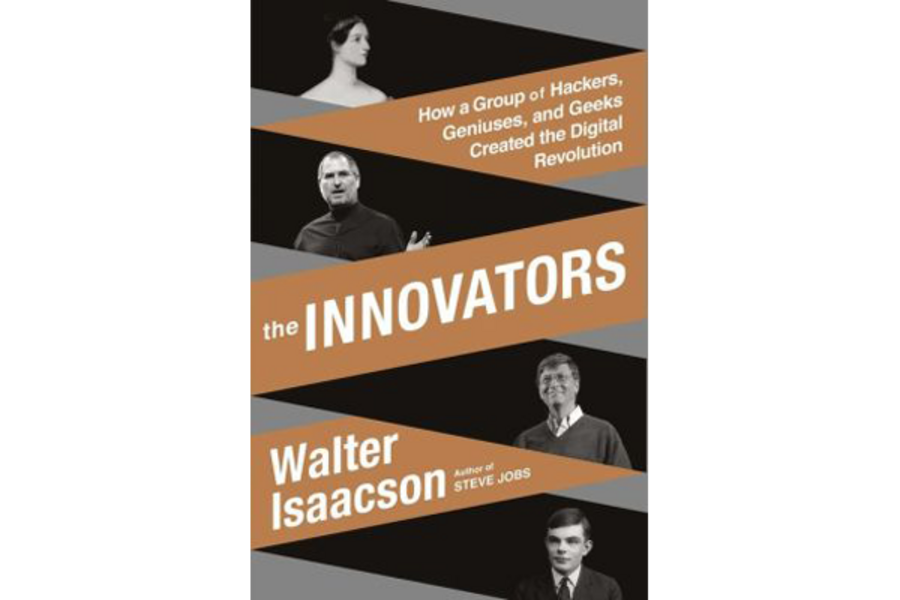'The Innovators' traces the history of the computer and its creators
Loading...
If you could pick up your smartphone and look at it with the eyes of an historian, you wouldn't see a single device – you'd see hundreds. You'd see gears, and punchcards, and vacuum tubes, and transistors, and circuit boards – in short, you'd see the evolution of the modern computer, a dizzying process of increasing efficiency, miniaturization, and organizational insight that has put us in the enviable position of being able to figure out how to drive and order from the nearest sushi bar without so much as handling anything printed on dead trees.
The Innovators, a new book by Steve Jobs biographer and former Time managing editor Walter Isaacson, does far more than analyze the hardware and software that gave birth to digital revolution – it fully explores the women and men who created the ideas that birthed the gadgets. In so doing, Isaacson tells stories of vanity and idealism, of greed and sacrifice, and of the kind of profound complexity that lies behind the development of seemingly simple technological improvements.
"Collaboration" is the author's supporting theme, and he weaves it in throughout his anecdotes and character studies. Approached lazily, this kind of leitmotif would be more irritating than illuminating, but Isaacson fully commits. Throughout the book's pages, we watch the men and women of the emerging computer industry swap (and steal) ideas, share (and hog) the spotlight, and get rich (or get cheated) after their innovations have been embraced and implemented by the market.
And while Isaacson brings "The Innovators" all the way up to the Google Era, he lays the groundwork for his tale in the Victorian era, as increased mechanization was beginning to change lives (for better or worse) throughout the British Empire. Watching Ada Lovelace (intellectually) swoon over, collaborate with, and eventually bitterly split from Charles Babbage is a treat, and Isaacson takes a great deal of care to explore and present the originality and importance of Lovelace's contributions to foundational concepts in computing, including an arguable but persuasive assertion that Lovelace first put into words a description of the modern computer, writing:
"The Analytical Engine does not occupy common ground with mere 'calculating machines.' It holds a position wholly its own. In enabling a mechanism to combine together general symbols, in successions of unlimited variety and extent, a uniting link is established between the operations of matter and the abstract mental processes."
His chapter on Lovelace sets the tone for "The Innovators" as a whole: She is painted as a person whose pure intellect and talent for math is united, seamlessly, with an imagination capable of seeing and describing the as-of-yet undiscovered.
Isaacson is skilled at untangling the tangled strands of memory and documentation and then reweaving them into a coherent tapestry that illustrates how something as complicated and important as the microchip emerged from a series of innovations piggybacking off of one another for decades (centuries, ultimately.)
One of his most absorbing chapters tells the story of computing pioneer William Shockley, whose work at Bell Labs helped give birth to the transistor, but whose desire for recognition and power alienated himself from his patrons, his employees, and – eventually – from polite society as he espoused increasingly crackpot theories about race and intelligence. Isaacson's portrait of Shockley is harsh but nuanced, and watching the storm clouds gather around one of the book's most striking antiheroes makes for engrossing reading and rich food for thought.
And while he follows Shockley toward his eventual collapse and disgrace, he manages to advance an astounding parade of incremental and foundational improvements in computer technology in a manner that is both dynamic and, somewhat incredibly, actually quite entertaining to read about. As transistors and microchips lurch from the possible to the real, geniuses and titans, talk, clash, laugh, collaborate, fight. Meanwhile, they forge the beginning of Silicon Valley as we, privileged spectators with ringside seats to the crucible of invention, look on.
If "The Innovators" were stripped of its vivid personal details and reflections on the nature of collaboration, it would still read as a lucid, lively, easy-to- follow scientific history of the evolution of the modern computer. But given its ambition and rich detail, it's rather more than that. It's a portrait both of a technology, and the culture that nurtured it. That makes it a remarkable book, and an example for other would-be gadget chroniclers to keep readily at hand before getting lost in a labyrinth of ones and zeros – at the expense of the human beings who built the maze in the first place.








